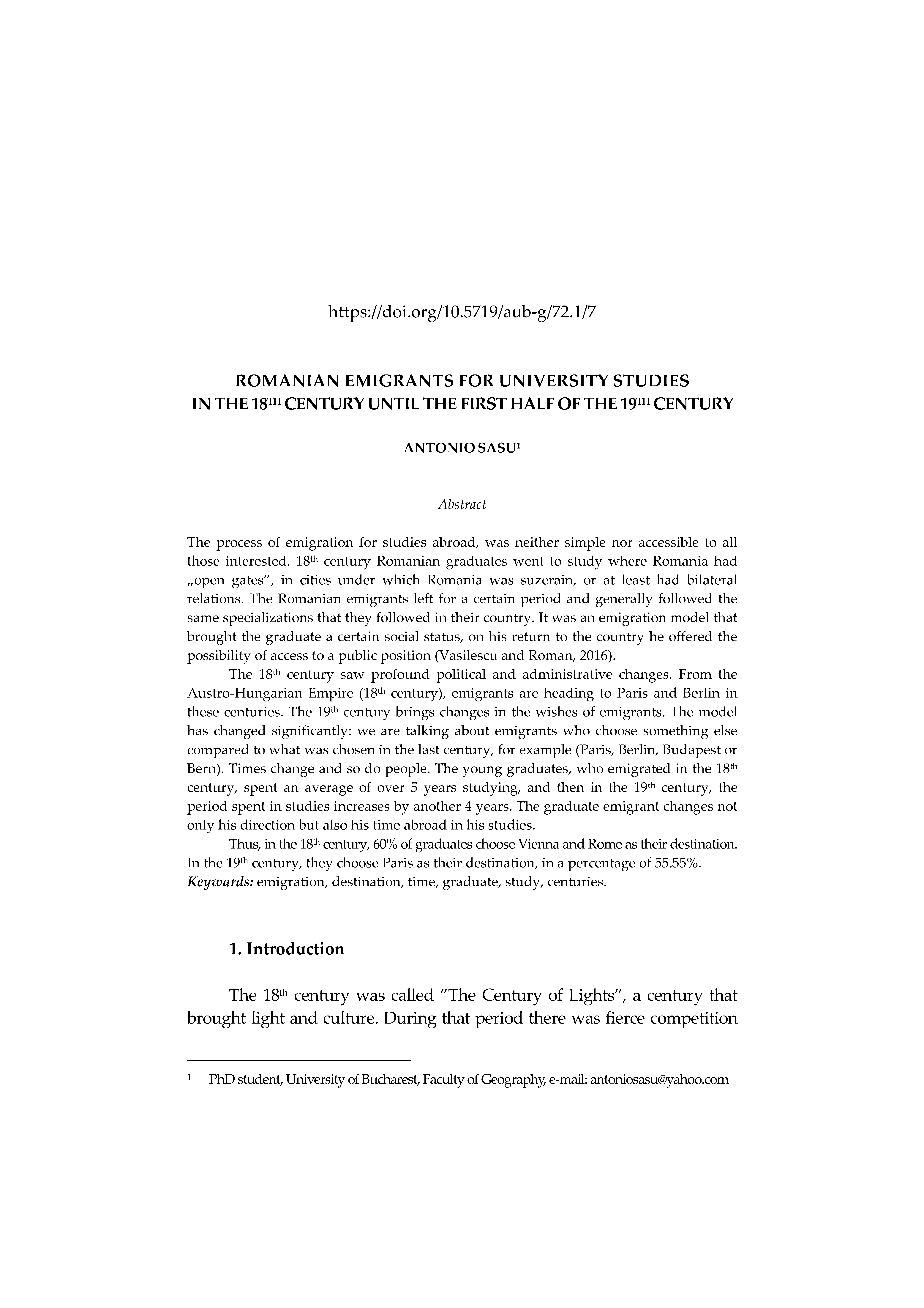ROMANIAN EMIGRANTS FOR UNIVERSITY STUDIES IN THE 18TH CENTURY UNTIL THE FIRST HALF OF THE 19TH CENTURY
DOI:
https://doi.org/10.5719/aub-g/72.1/7Cuvinte cheie:
emigration, destination, time, graduate, study, centuriesRezumat
The process of emigration for studies abroad, was neither simple nor accessible to all those interested. 18th century Romanian graduates went to study where Romania had „open gates”, in cities under which Romania was suzerain, or at least had bilateral relations. The Romanian emigrants left for a certain period and generally followed the same specializations that they followed in their country. It was an emigration model that brought the graduate a certain social status, on his return to the country he offered the possibility of access to a public position (Vasilescu and Roman, 2016).
The 18th century saw profound political and administrative changes. From the Austro-Hungarian Empire (18th century), emigrants are heading to Paris and Berlin in these centuries. The 19th century brings changes in the wishes of emigrants. The model has changed significantly: we are talking about emigrants who choose something else
compared to what was chosen in the last century, for example (Paris, Berlin, Budapest or Bern). Times change and so do people. The young graduates, who emigrated in the 18th century, spent an average of over 5 years studying, and then in the 19th century, the period spent in studies increases by another 4 years. The graduate emigrant changes not only his direction but also his time abroad in his studies.
Thus, in the 18th century, 60% of graduates choose Vienna and Rome as their destination. In the 19th century, they choose Paris as their destination, in a percentage of 55.55%.




